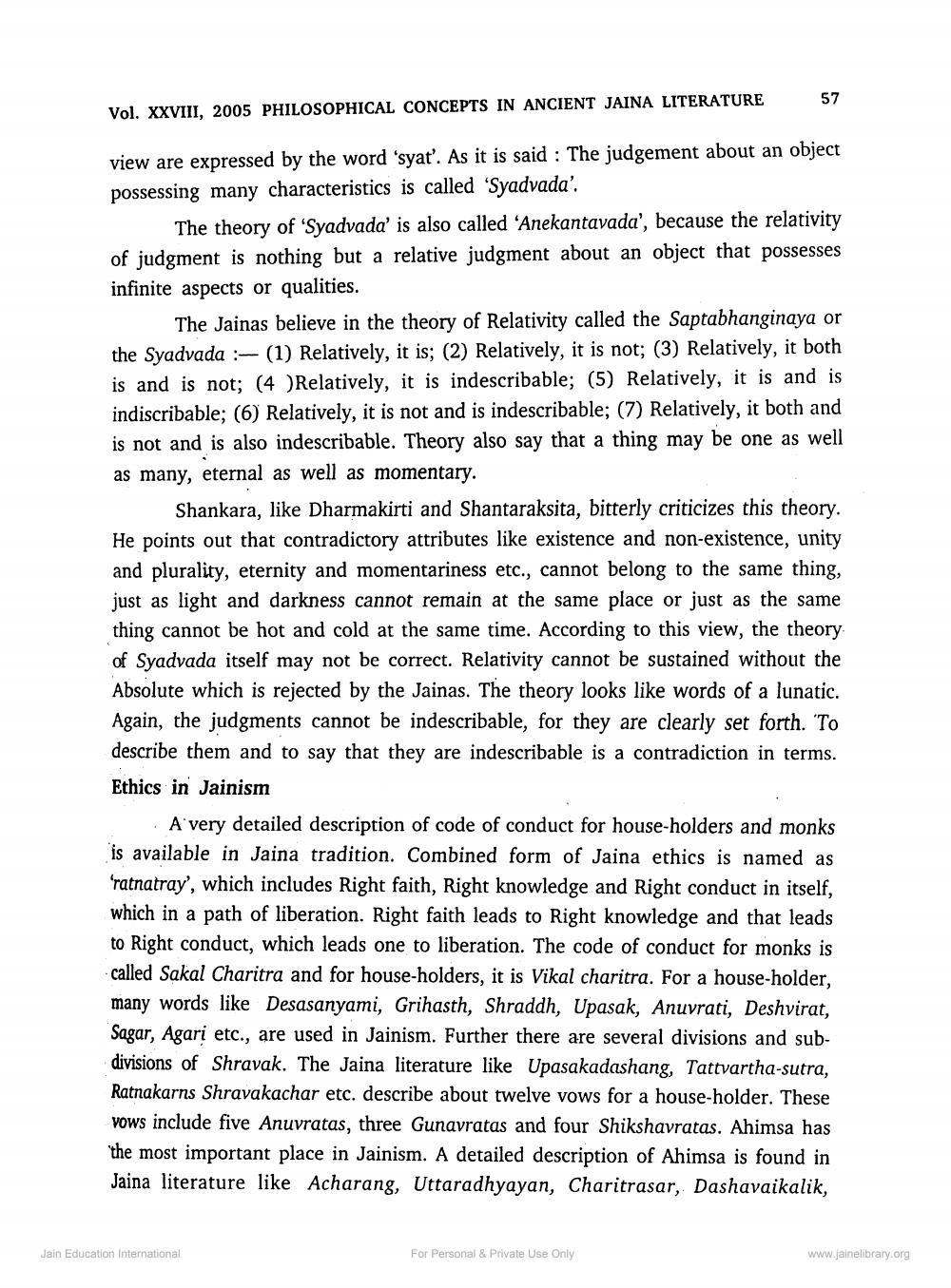________________
57
Vol. XXVIII, 2005 PHILOSOPHICAL CONCEPTS IN ANCIENT JAINA LITERATURE
view are expressed by the word 'syat'. As it is said : The judgement about an object possessing many characteristics is called 'Syadvada'.
The theory of 'Syadvada' is also called 'Anekantavada', because the relativity of judgment is nothing but a relative judgment about an object that possesses infinite aspects or qualities.
The Jainas believe in the theory of Relativity called the Saptabhanginaya or the Syadvada (1) Relatively, it is; (2) Relatively, it is not; (3) Relatively, it both is and is not; (4) Relatively, it is indescribable; (5) Relatively, it is and is indiscribable; (6) Relatively, it is not and is indescribable; (7) Relatively, it both and is not and is also indescribable. Theory also say that a thing may be one as well as many, eternal as well as momentary.
Shankara, like Dharmakirti and Shantaraksita, bitterly criticizes this theory. He points out that contradictory attributes like existence and non-existence, unity and plurality, eternity and momentariness etc., cannot belong to the same thing, just as light and darkness cannot remain at the same place or just as the same thing cannot be hot and cold at the same time. According to this view, the theory of Syadvada itself may not be correct. Relativity cannot be sustained without the Absolute which is rejected by the Jainas. The theory looks like words of a lunatic. Again, the judgments cannot be indescribable, for they are clearly set forth. "To describe them and to say that they are indescribable is a contradiction in terms. Ethics in Jainism
A very detailed description of code of conduct for house-holders and monks is available in Jaina tradition. Combined form of Jaina ethics is named as ‘ratnatray', which includes Right faith, Right knowledge and Right conduct in itself, which in a path of liberation. Right faith leads to Right knowledge and that leads to Right conduct, which leads one to liberation. The code of conduct for monks is -called Sakal Charitra and for house-holders, it is Vikal charitra. For a house-holder, many words like Desasanyami, Grihasth, Shraddh, Upasak, Anuvrati, Deshvirat, Sagar, Agari etc., are used in Jainism. Further there are several divisions and subdivisions of Shravak. The Jaina literature like Upasakadashang, Tattvartha-sutra, Ratnakarns Shravakachar etc. describe about twelve vows for a house-holder. These vows include five Anuvratas, three Gunavratas and four Shikshavratas. Ahimsa has the most important place in Jainism. A detailed description of Ahimsa is found in Jaina literature like Acharang, Uttaradhyayan, Charitrasar, Dashavaikalik,
Jain Education International
For Personal & Private Use Only
www.jainelibrary.org




